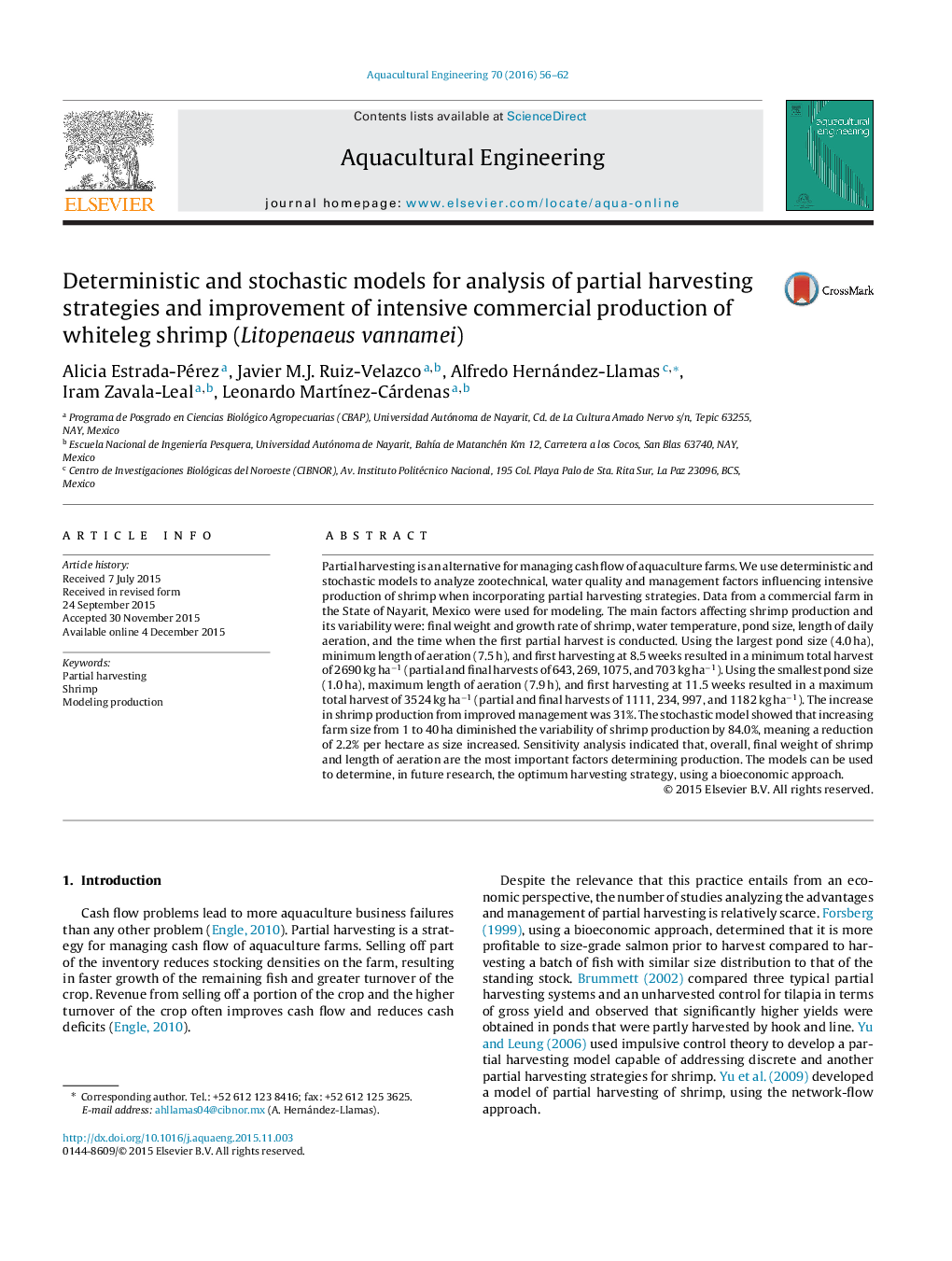| کد مقاله | کد نشریه | سال انتشار | مقاله انگلیسی | نسخه تمام متن |
|---|---|---|---|---|
| 4527133 | 1625700 | 2016 | 7 صفحه PDF | دانلود رایگان |
• We model intensive production of shrimp considering partial harvesting strategies.
• Improving management can increase production from 2690 to 3524 kg ha−1.
• Reduction in variability is obtained by improving management and increasing farm size.
• Final weight of shrimp, and length of daily aeration are the most important factors.
Partial harvesting is an alternative for managing cash flow of aquaculture farms. We use deterministic and stochastic models to analyze zootechnical, water quality and management factors influencing intensive production of shrimp when incorporating partial harvesting strategies. Data from a commercial farm in the State of Nayarit, Mexico were used for modeling. The main factors affecting shrimp production and its variability were: final weight and growth rate of shrimp, water temperature, pond size, length of daily aeration, and the time when the first partial harvest is conducted. Using the largest pond size (4.0 ha), minimum length of aeration (7.5 h), and first harvesting at 8.5 weeks resulted in a minimum total harvest of 2690 kg ha−1 (partial and final harvests of 643, 269, 1075, and 703 kg ha−1). Using the smallest pond size (1.0 ha), maximum length of aeration (7.9 h), and first harvesting at 11.5 weeks resulted in a maximum total harvest of 3524 kg ha−1 (partial and final harvests of 1111, 234, 997, and 1182 kg ha−1). The increase in shrimp production from improved management was 31%. The stochastic model showed that increasing farm size from 1 to 40 ha diminished the variability of shrimp production by 84.0%, meaning a reduction of 2.2% per hectare as size increased. Sensitivity analysis indicated that, overall, final weight of shrimp and length of aeration are the most important factors determining production. The models can be used to determine, in future research, the optimum harvesting strategy, using a bioeconomic approach.
Journal: Aquacultural Engineering - Volume 70, January 2016, Pages 56–62
